In the alchemy of skincare, every ingredient serves a purpose—to enchant the surface or to conjure healing from within. Your skin, a living tapestry, reacts to the slightest spells cast upon it by lotions, potions, and serums. The quest for the elixir of youth and beauty is as old as time, but modern science has distilled the essence of what truly works. Behold the most potent elements in the skincare realm, ingredients that have earned their rank through relentless research and timeless results. Dive deep into the cauldron of beauty with us as we reveal the best skincare ingredients that are the gold standard for anyone seeking to transform their skincare ritual into an enchanting experience.
The Hydration Heroes: Humectants, Emollients, and Occlusives
- Hyaluronic Acid (HA): Often touted as the ultimate thirst quencher for your skin, HA is a naturally occurring polysaccharide that can hold up to 1000 times its weight in water. It draws moisture into the skin, providing an instant plumping effect and improving skin hydration over time.
- Glycerin: This unsung hero is found in countless products for a good reason. Glycerin is a humectant that attracts water, helping to keep the skin’s moisture levels balanced. It’s gentle and effective, making it suitable for almost all skin types.
- Ceramides: These lipid molecules are found in the skin naturally and are essential for maintaining the skin barrier and retaining moisture. They’re emollients, which means they fill in the cracks of the skin, making it smooth and supple.
The Age-Defiers: Antioxidants and Cell Communicators
- Vitamin C (L-Ascorbic Acid): A powerhouse antioxidant that protects free radical damage from environmental stressors like UV rays and pollution. It also boosts collagen production and can lighten dark spots, leading to brighter, firmer, and more even-toned skin.
- Retinoids (Retinol, Tretinoin, Adapalene): Vitamin A derivatives that are the gold standard for anti-aging. They speed up cell turnover, diminish fine lines, and improve skin texture. They can be irritating for some, so it’s essential to start slow and consult a dermatologist.
- Niacinamide (Vitamin B3): This multifunctional ingredient supports the skin barrier, reduces inflammation, and can help with pigmentation issues. It’s also been shown to reduce the appearance of pore size over time.
The Clarifiers: Exfoliants and Oil Regulators
- Alpha Hydroxy Acids (AHAs) and Beta Hydroxy Acid (BHA): AHAs, like glycolic and lactic acid, are water-soluble and exfoliate the skin’s surface, while BHA (salicylic acid) is oil-soluble, which allows it to penetrate deeper into the pores to clear out excess sebum and dead skin cells.
- Benzoyl Peroxide: A mainstay in acne treatment, benzoyl peroxide works by killing bacteria underneath the skin, unclogging pores, and reducing inflammation.
- Sulfur: While not as commonly discussed, sulfur inhibits the growth of acne-causing bacteria and helps to exfoliate the skin.
The Soothers: Anti-Inflammatories and Barrier Builders
- Aloe Vera: Popular for its soothing properties, aloe vera is rich in vitamins, enzymes, and amino acids. It can provide immediate relief to irritated skin and has healing properties.
- Centella Asiatica (Cica): A medicinal herb that’s been making waves in skincare for its healing, anti-inflammatory, and collagen-boosting properties. It’s often found in products designed to calm sensitive or compromised skin.
- Colloidal Oatmeal: This finely ground oatmeal is a natural anti-irritant, which is clinically proven to soothe itching and inflammation associated with various skin issues, including eczema and atopic dermatitis.
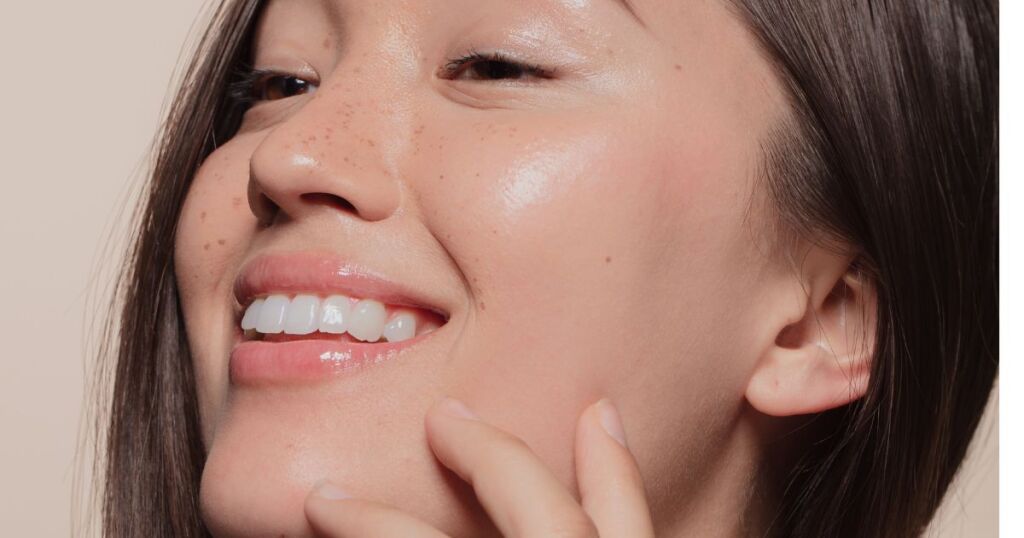
The Brighteners: Pigment Fighters and Radiance Boosters
- Kojic Acid: A by-product of fermented rice, kojic acid is effective at treating hyperpigmentation by inhibiting melanin production.
- Arbutin: A gentler cousin of hydroquinone, arbutin works by slowly releasing hydroquinone over time, inhibiting melanin production and fading dark spots.
- Licorice Extract: This natural ingredient has skin-soothing properties and contains liquiritin, an active compound that helps disperse and remove melanin and pigmentation.
The Protectors: Sunscreen Active Ingredients
No skincare spell is complete without the final incantation: sunscreen. All these ingredients work to improve the health and appearance of your skin, but without protection from the sun’s UV rays, their effects can be nullified, or worse, reversed. These ingredients are two types:
- Zinc Oxide and Titanium Dioxide: These physical or mineral sunscreen ingredients sit on the top layer of the skin, reflecting away UV radiation. They are less prone to cause irritation or allergic reactions, making them suitable for sensitive skin types.
- Avobenzone, Octisalate, and Octocrylene: These chemical sunscreen ingredients absorb UV radiation, converting it into heat and releasing it from the skin.
The Innovators: Next-Gen Skincare Ingredients and Biotech Blends
- Peptides: Small chains of amino acids that act as building blocks of proteins such as collagen, elastin, and keratin. These proteins are the foundation of your skin and are responsible for its texture, strength, and resilience.
- Bakuchiol: Known as a natural retinol alternative. Bakuchiol has been shown to have anti-aging effects without the usual irritation associated with retinoids, making it suitable for sensitive skin.
- Epidermal Growth Factors (EGFs): These proteins promote cell growth and proliferation, improving skin regeneration and healing.
How to Incorporate These Ingredients into Your Routine
It’s crucial to introduce new ingredients to your routine gradually and to be mindful of how they may interact with one another. For instance, retinoids and AHAs/BHAs can be particularly drying and irritating if used together, so it’s often recommended to alternate their use or consult a dermatologist for personalized advice.
Another point to consider is the form of the ingredient. For instance, Vitamin C comes in various derivatives that may be more stable and less irritating than pure ascorbic acid. The concentration of an ingredient is also significant – higher isn’t always better, as some substances can be too harsh at strong percentages.
When layering products, a good rule of thumb is to go from thinnest to thickest in terms of texture. Start with cleansed skin, move on to toners and serums, and finish with moisturizers and oils. And always, no matter what other ingredients you’re using, finish with sunscreen during the day.
Combining Ingredients for Your Skin Type
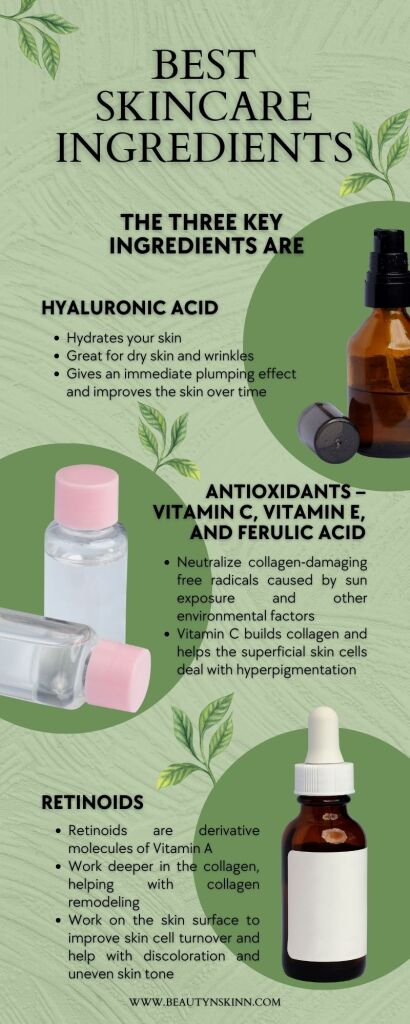
While knowing the individual powers of these ingredients is crucial, understanding how to combine them effectively is akin to mastering the art of potion-making. Here’s a simple guide:
For Aging Skin:
- Morning Ritual: A potion of vitamin C serum under sunscreen with zinc oxide can protect against photoaging.
- Night Spell: Apply a retinoid blended with hyaluronic acid to address wrinkles and ensure hydration.
For Acne-Prone Skin:
- Daily Cleansing: Use a salicylic acid cleanser to unclog pores.
- Balancing Act: Follow with a niacinamide serum to control oil production and reduce inflammation.
For Dry Skin:
- Hydration Elixir: Layer hyaluronic acid under a ceramide-rich moisturizer to deeply nourish and repair the skin barrier.
- Squalane Seal: Use squalane oil as the final step to seal in moisture.
For Sensitive Skin:
- Gentle Touch: Opt for a peptide-rich serum that soothes and rejuvenates without irritation.
- Barrier Boost: Ceramide-based creams can fortify the skin’s natural defenses.
The Alchemy of Application: Best Practices
Mixing your skincare ingredients requires wisdom. Here’s how to avoid ingredient interactions that could turn your skincare routine into a cursed ritual:
- Retinoids and AHAs/BHAs: These can be overly irritating if used together. It’s best to use them on alternate nights or one in the morning and one at night.
- Vitamin C and AHAs/BHAs: The acidic pH required for both can cause irritation and destabilize vitamin C. Apply them at different times.
- Retinoids and Vitamin C: This combination can be too harsh for some. If you wish to use both, vitamin C in the morning and retinoids at night is a safer bet.
While it may seem like you need an advanced degree in chemistry to understand skincare ingredients, this guide breaks down the most effective and trusted elements that can make a significant difference in your skin’s health and appearance. Keep in mind that everyone’s skin is unique, and what works for one person may not work for another. It’s always a good idea to patch-test new products and ingredients to ensure they suit your skin type and consult a dermatologist for personalized advice.
By empowering yourself with knowledge about these star ingredients, you can make more specific and informed choices about the products you introduce into your skincare ritual, leading to a healthier, glowing complexion. Because, after all, skincare is more than just skin deep—it’s about nourishing your body’s largest organ and feeling your best in the skin you’re in.


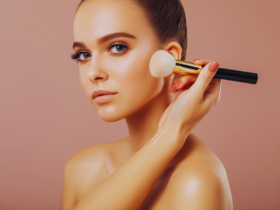


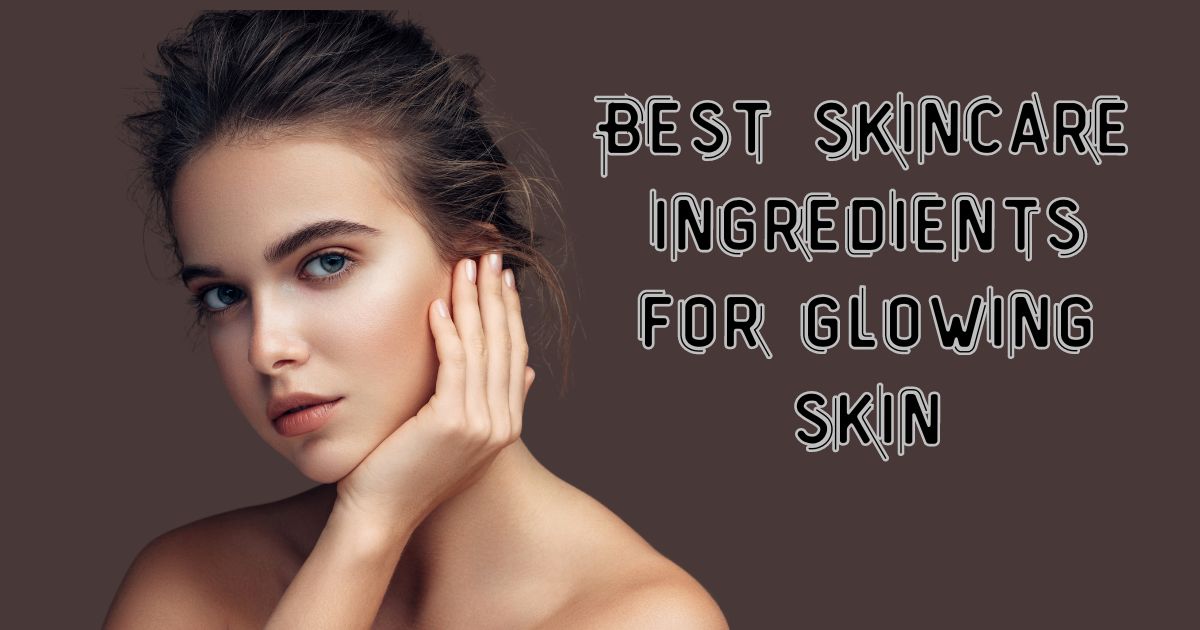
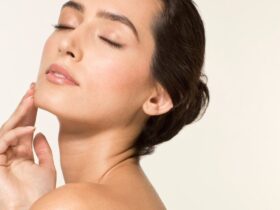

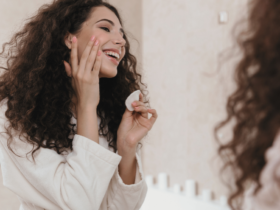
3 Comments